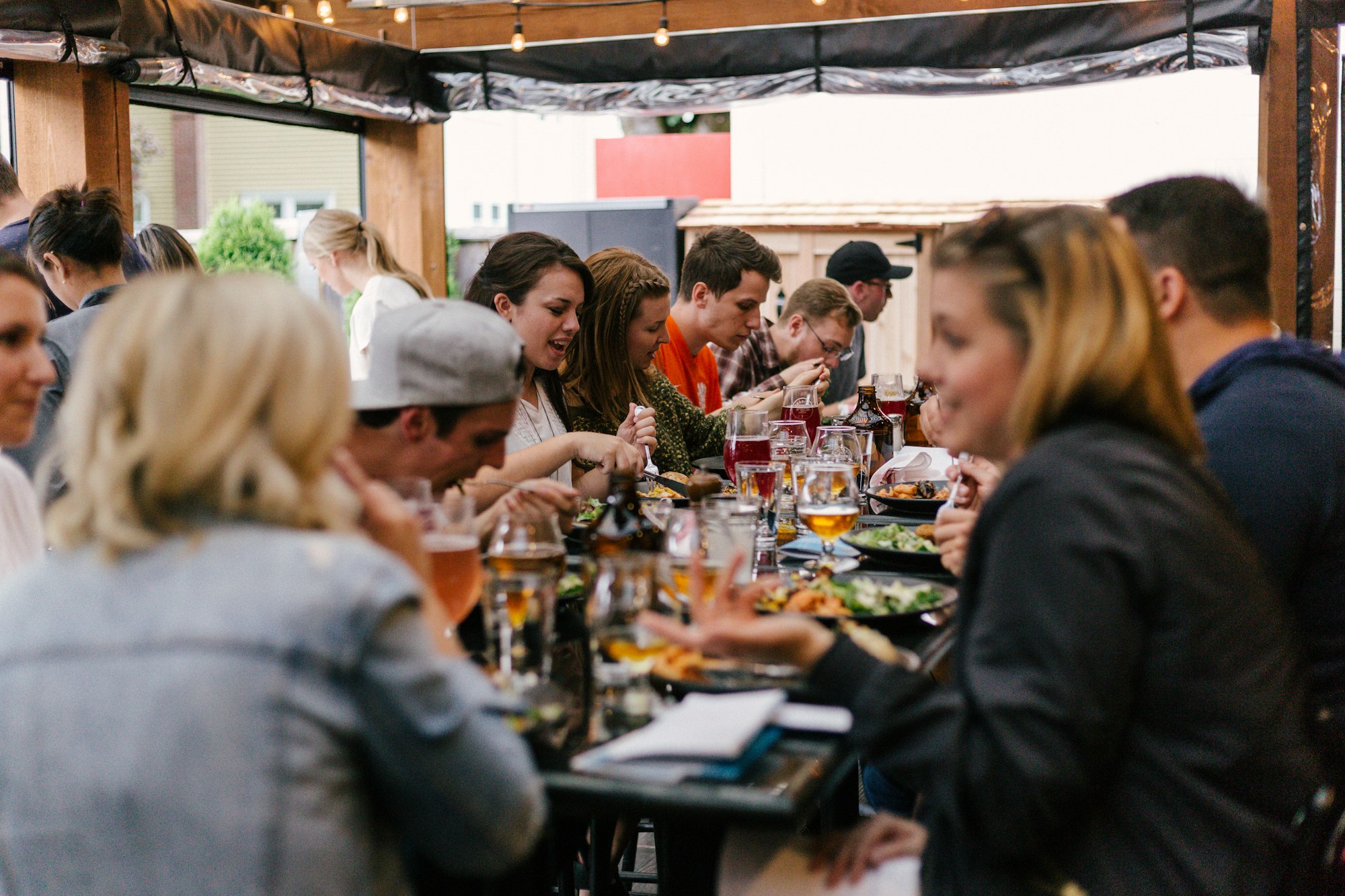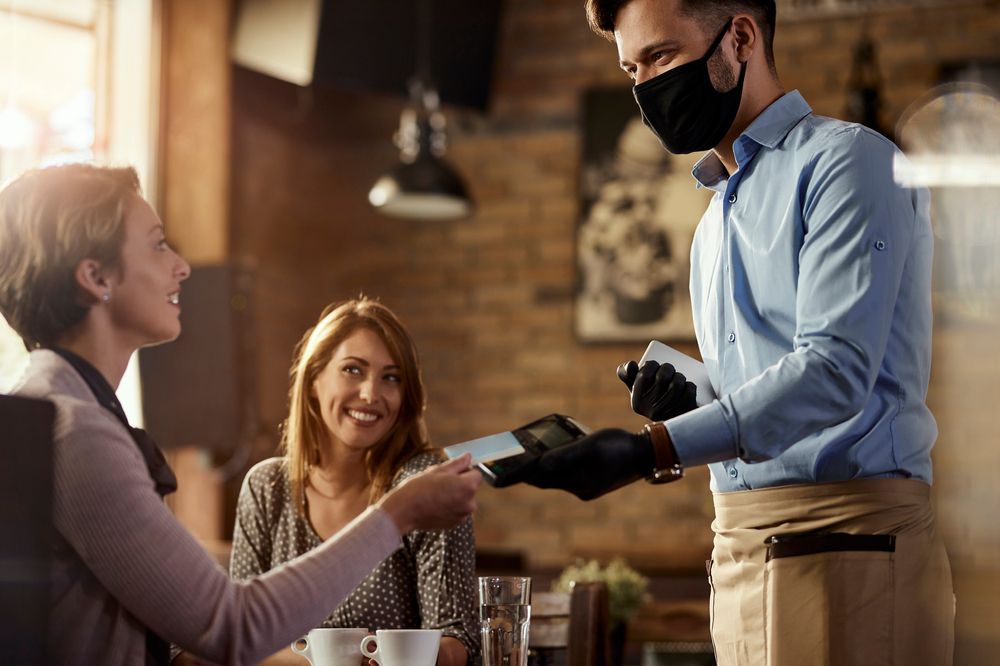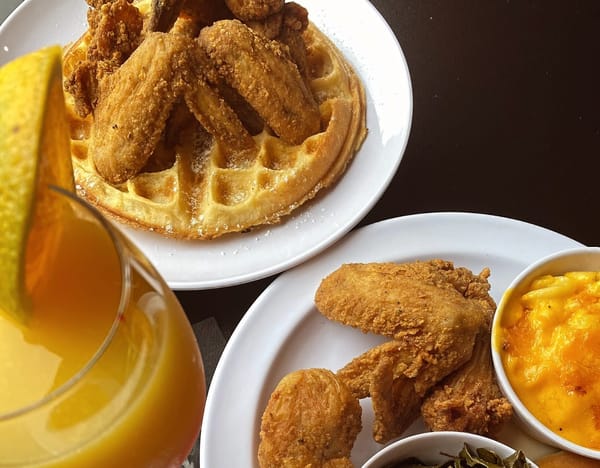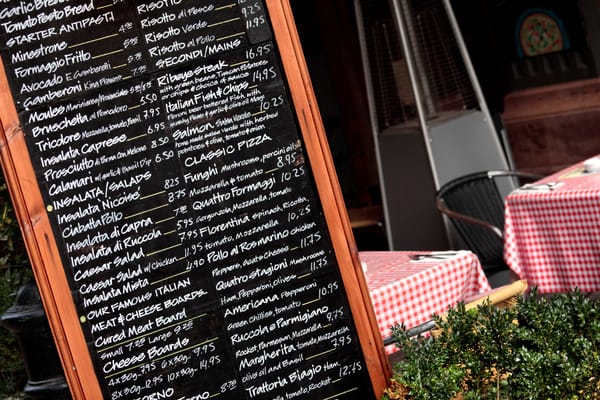Restaurant table turnover is critical to the success of a dining establishment—and tech solutions are here to lend a helping hand.
If guests are eager to dine at your restaurant, you want to make sure you're meeting that demand. Finding an efficient cadence for table turnover will help your restaurant appease hungry guests and seize every revenue opportunity, which are essential ingredients for success in today's challenging and competitive restaurant climate.
With the right systems and tools in place, you can better satisfy customer demand, enhance customer service, and position your restaurant to maximize its revenue potential.
Table turnover rate and its importance to your restaurant's performance.
Simply put, table turnover rate is the average length of time parties occupy tables in your restaurant.
As a benchmark, dining tables at full-service restaurants generally flip every 1 to 2 hours. Family restaurants tend to run at the lower end of that spectrum, while fine-dining establishments frequently sit at the higher end. Factors such as the experience level of your team members, staff size, type of cuisine, and the size of your menu can also impact table turnover rate.
Knowing your table turnover rate—particularly during your busiest times—will help inform staffing, scheduling, investments, training, and more, as an outsized figure points to potential for improvement.
Here's how to calculate table turnover rate at your restaurant:
1. Define the specific time period you want to measure. Let's say you have a casual dining restaurant and you want to measure your busiest time: the dinner daypart on Saturday, which runs from 4:00 – 10:00 p.m.
2. Identify the number of parties you served at each table during this period. For our example, let's say you served 150 parties.
3. Divide the number of parties served by the number of tables in your dining room. If you served 150 parties in your 50-table dining room, then your average table turnover rate (150 divided by 50) would be three.

In this example, you're turning your tables three times—or every two hours—during a Saturday dinner service. Since the average table turnover time for casual restaurants tends to hover around 90 minutes, the odds are good you're not turning tables fast enough to realize your true revenue potential. What's more, your guests are likely waiting longer than necessary for tables—a surefire way to drive disenchantment.
Tech solutions to drive your restaurant table turnover.
Because your restaurant doesn't have an infinite amount of time or dining capacity, you want to maximize your revenue potential when you're open and serving guests. This means making table turnover a priority, but thoughtfully so that customers don't feel rushed.
There are various strategies you can take to improve your table turnover rate, such as:
- Trimming your menu and removing labor- and time-intensive items
- Declining to seat incomplete parties, avoiding duplicate actions like taking orders or dropping off water for newly arrived table guests
- Defining clear responsibilities and tasks for hosts, servers, expediters, and bussers to maximize dining room coordination
In addition, you can leverage technology to drive efficiencies, quicken the pace of table turnovers, and ensure a fluid guest experience. Here are five such tech-fueled approaches:
1. Embrace contactless dining.
Contactless dining with QR codes allows guests to order and pay directly from their phones, speeding up both the ordering and checkout processes. Rather than waiting around for a server to take an order, deliver the check, and process payment, your guests can view the menu, order, and complete their transaction as soon as they're ready. This drastically reduces downtime and keeps the dining process moving forward.
2. Arm servers with handheld point-of-sale units.
Constant trips back and forth to a fixed POS system hamper table turnover. With mobile POS units, though, servers record orders tableside—a more accurate process, it's worth noting—and send them directly into the kitchen or bar in real-time. Subsequently, food comes out quicker. These same handheld devices can be used to process payment tableside, too. By eliminating the need to run back and forth to a fixed POS terminal, your staff saves time and energy, facilitating faster table turns.
3. Employ a digital reservations and waitlist system.
Reservations and waitlists help you know what's coming so you can better plan staffing and deliver smooth, responsive service. You can also send guests who reserve a table online a link to your digital menu so they can peruse it in advance, which should spur quicker ordering and, subsequently, a quicker table turn.
4. Use online ordering to get dine-in guests rolling.
While the vast majority of online orders will be enjoyed off-premises, the same online ordering system can be used to expedite table turnover times in the dining room and improve the guest experience. If you invite guests to preorder an appetizer or drink when they schedule an online reservation or while they wait for a table, for example, your team can have those items at the ready and immediately serve guests when they sit down. That's being on top of it for your guests and propelling faster table turnover.
5. Leverage data to drive action.
A modern POS system will feature robust reporting packed with valuable data you can use to improve your table turnover rates. You can spot trends in days or dayparts to ensure proper staffing levels. You can review table sizes to inform seating arrangements and dining room layout, such as investing in two-tops rather than four-tops if 75% of your guests are dining solo or with one other person. You can also review staff performance to see if specific servers are slow to turn tables compared to their peers, which opens the door to training.
Not only will these tech-driven solutions help your restaurant improve table turnover and heighten revenue, but they'll also help you combat the current industry labor shortages and empower you to be more responsive to your guests—so many of whom want technologies that streamline their dining experiences. According to the National Restaurant Association, 52% of adults would like to see restaurants incorporate more technology to make ordering and payment easier.
Elevate your table turnover game.
For dine-in establishments, each table is valuable real estate and your restaurant revenue is directly tied to table turns. If tables are occupied for too long, then you can't seat new diners. If you can't seat new diners, then you can't capture their orders. If you can't capture orders, then your top line takes a hit.
The most successful restaurants are efficient in everything they do, including getting guests seated, fed, and delighted before replicating that process time and time again. An organized, well-trained staff supported by the right technology tools can help your restaurant increase table turns, thereby reducing wait times, better servicing guests, and driving more fruitful results.













